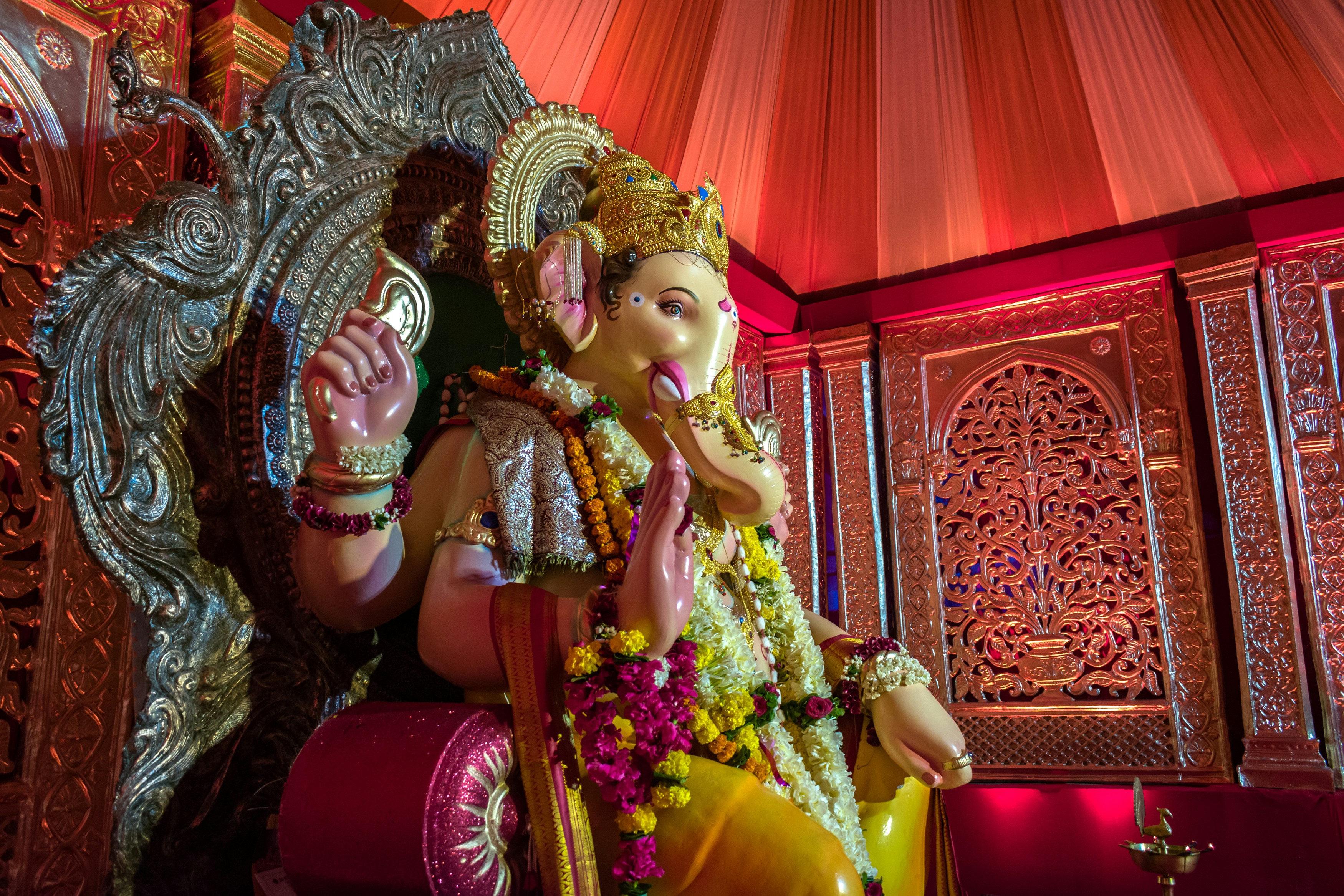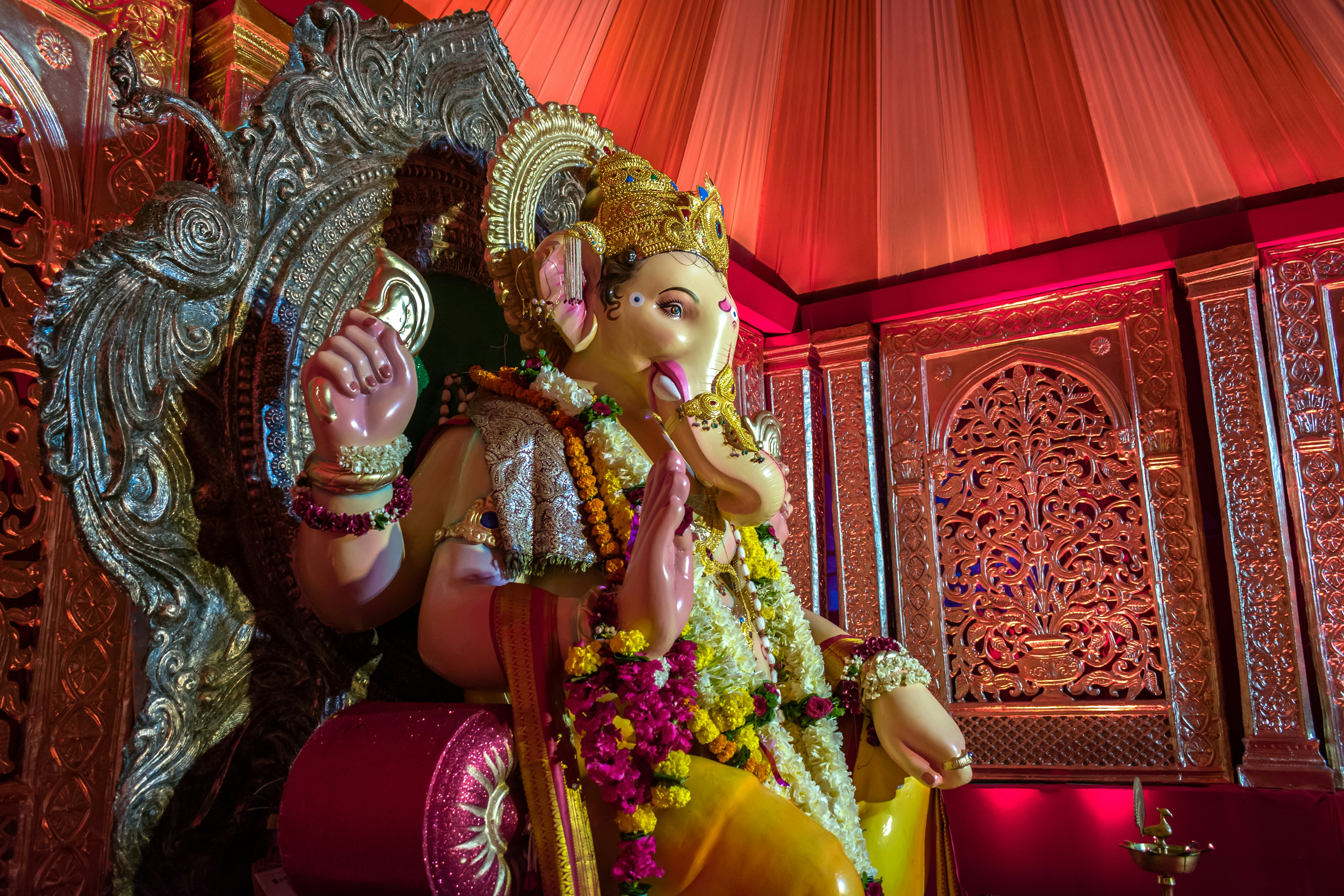The Kandariya Mahadeva Temple: Khajuraho’s Architectural Marvel
Khajuraho, a small town in the state of Madhya Pradesh, India, is famous for its stunning temples that showcase the rich cultural heritage of the country. Among these temples, the Kandariya Mahadeva Temple stands out as a true architectural marvel. Built during the reign of the Chandela dynasty, this temple is a masterpiece of craftsmanship and a testament to the skill and creativity of the artisans of that era.
The Kandariya Mahadeva Temple is dedicated to Lord Shiva, one of the most revered deities in Hinduism. Its construction began in the 10th century and took several decades to complete. The temple is known for its intricate carvings, which adorn every inch of its exterior walls. These carvings depict various scenes from Hindu mythology, including gods, goddesses, celestial beings, and everyday life activities. The level of detail and precision in these carvings is truly remarkable, and it is said that the artisans used only simple tools like chisels and hammers to create them.
One of the most striking features of the Kandariya Mahadeva Temple is its towering spire, which reaches a height of over 100 feet. This spire, also known as the shikhara, is adorned with numerous sculptures and miniature shrines. It is a visual representation of Mount Kailash, the abode of Lord Shiva, and is considered a symbolic link between the earthly realm and the divine. The intricate design and the sheer scale of the spire make it a sight to behold, especially when illuminated by the golden rays of the sun.
Entering the temple, one is greeted by a vast pillared hall known as the mandapa. This hall served as a gathering place for devotees and was used for religious ceremonies and performances. The pillars of the mandapa are intricately carved with scenes from Hindu mythology, and each one is unique in its design. The play of light and shadow on these pillars creates a mesmerizing effect, adding to the overall grandeur of the temple.
As one moves further into the temple, they come across the garbhagriha, the sanctum sanctorum where the main deity is enshrined. The garbhagriha is a small, dimly lit chamber that exudes an aura of spirituality. The centerpiece of the garbhagriha is a lingam, a phallic symbol representing Lord Shiva. Devotees offer prayers and perform rituals in front of the lingam, seeking blessings and spiritual enlightenment.
Overall, the Kandariya Mahadeva Temple is not just a place of worship but also a living testament to the architectural brilliance of ancient India. It showcases the mastery of the Chandela artisans and their ability to create awe-inspiring structures that have stood the test of time. Visiting this temple is like stepping back in time, immersing oneself in the rich history and culture of the region. It is a must-visit for anyone with an interest in art, history, and spirituality.
The Kandariya Mahadeva Temple, with its intricate carvings and towering spires, stood as a testament to the architectural brilliance and artistic prowess of the Chandela dynasty. The temple complex was not only a place of worship but also a hub of cultural and intellectual activities. It attracted scholars, artists, and pilgrims from far and wide, making Khajuraho a vibrant and cosmopolitan city.
The construction of the Kandariya Mahadeva Temple was a monumental undertaking that required the combined efforts of skilled craftsmen, architects, and engineers. Every aspect of the temple, from its layout to its ornamentation, was meticulously planned and executed. The temple’s design followed the principles of Vastu Shastra, an ancient Indian architectural treatise that prescribed guidelines for the construction of sacred structures.
As one entered the temple complex, they would be greeted by a grand entrance gate adorned with intricately carved sculptures depicting scenes from Hindu mythology. The gate served as a transition from the mundane world to the sacred realm of the temple. From there, a series of steps led to the main courtyard, where devotees would gather for prayers and rituals.
The temple itself was a masterpiece of architectural ingenuity. Its towering spire, known as the shikhara, reached towards the heavens, symbolizing the connection between the earthly and the divine. The shikhara was adorned with a profusion of sculptures depicting gods, goddesses, celestial beings, and mythical creatures. Each sculpture was a work of art in its own right, showcasing the skill and craftsmanship of the sculptors.
Inside the temple, the sanctum sanctorum housed the main deity, Lord Shiva, in the form of a lingam. The sanctum was a sacred space, accessible only to the priests and initiated devotees. Surrounding the sanctum were smaller shrines dedicated to various deities, each with its own unique architectural features and sculptures.
Outside the temple, the complex was dotted with smaller shrines, pavilions, and tanks. These structures served various purposes, from housing the temple staff to providing spaces for meditation and contemplation. The tanks, known as kunds, were used for ritual bathing and were believed to have healing properties.
Over the centuries, the Kandariya Mahadeva Temple has witnessed the rise and fall of empires, the ebb and flow of religious fervor, and the passage of time. It has stood as a silent witness to the changing fortunes of Khajuraho, a reminder of its glorious past and a testament to the enduring power of human creativity and devotion.
Continuing further, the carvings on the exterior walls of the Kandariya Mahadeva Temple are not only visually stunning but also hold great significance. Each carving tells a story, depicting episodes from Hindu mythology and showcasing the rich cultural heritage of the region.
One can find carvings of gods and goddesses such as Brahma, Vishnu, and Shiva, along with their various incarnations and consorts. These deities are depicted in different poses, each symbolizing a specific aspect of their divine nature. For example, Lord Shiva is often shown in his Nataraja form, the cosmic dancer, symbolizing the cycle of creation and destruction.
In addition to the deities, the carvings also depict scenes from epic tales like the Ramayana and the Mahabharata. These stories are not only entertaining but also teach valuable life lessons and moral values. The carvings serve as a visual representation of these stories, allowing devotees to easily connect with the narratives and deepen their understanding of the scriptures.
Furthermore, the carvings also showcase the everyday life of the people during that era. Scenes of musicians, dancers, artisans, and farmers can be found, providing a glimpse into the social and cultural fabric of the time. These carvings not only celebrate the divine but also celebrate the human spirit and the beauty of everyday life.
As you explore the temple, you can’t help but be amazed by the level of detail and precision in the carvings. Every inch of the temple is adorned with intricate designs, creating a visual feast for the eyes. The craftsmen who worked on the temple must have possessed exceptional skill and patience, as it would have taken years to complete such a masterpiece.
Overall, the Kandariya Mahadeva Temple stands as a testament to the architectural brilliance and artistic prowess of the people of that era. It is a living testament to their devotion and dedication to their faith, and a reminder of the rich cultural heritage that continues to inspire and awe visitors to this day.
The spiritual significance of the Kandariya Mahadeva Temple goes beyond its physical beauty and architectural grandeur. It is believed that the temple is a sacred space where devotees can connect with the divine and experience a deep sense of spirituality.
When devotees enter the temple, they are greeted by the serene atmosphere and the intricate carvings that adorn the walls. These carvings depict various scenes from Hindu mythology, including the divine marriage of Lord Shiva and Goddess Parvati, the battle between gods and demons, and the different forms of Lord Shiva.
As devotees offer their prayers and perform rituals, they believe that their wishes and desires are being heard by Lord Shiva himself. It is said that the energy and vibrations generated by the collective prayers and devotion create a powerful spiritual aura within the temple.
Many devotees also believe that worshiping at the Kandariya Mahadeva Temple can bring them blessings, prosperity, and spiritual enlightenment. They seek the guidance and protection of Lord Shiva, who is considered the destroyer of evil and the harbinger of positive energy.
During religious festivals like Mahashivratri, the temple becomes a hub of spiritual activity. Devotees from all over the country flock to the temple to offer their prayers and seek the blessings of Lord Shiva. The atmosphere is charged with devotion and faith, as people come together to celebrate the divine presence.
In addition to the religious aspect, the Kandariya Mahadeva Temple also plays a significant role in promoting the region’s cultural heritage. The temple premises often serve as a venue for the Khajuraho Dance Festival, a week-long celebration of classical Indian dance and music.
The festival attracts renowned artists and performers from all over the world, who come together to showcase their talent and pay homage to the rich cultural traditions of India. The temple provides a stunning backdrop for these performances, adding to the overall aesthetic appeal of the event.
Overall, the Kandariya Mahadeva Temple is not just a place of worship, but a symbol of spirituality, cultural heritage, and artistic excellence. It continues to inspire and captivate visitors with its timeless beauty and the sense of divine presence that permeates its sacred halls.
Preservation and UNESCO World Heritage Site
Over the centuries, the Kandariya Mahadeva Temple has faced the ravages of time and nature. However, efforts have been made to preserve this architectural gem for future generations.
In recognition of its cultural and historical significance, the Kandariya Mahadeva Temple, along with the other temples of Khajuraho, was designated as a UNESCO World Heritage Site in 1986. This prestigious title not only acknowledges the exceptional value of the temple but also places a responsibility on the local authorities and the community to safeguard its integrity.
Preservation efforts have been multifaceted and have involved a combination of restoration, conservation, and maintenance. Skilled artisans and experts have meticulously worked to restore the intricate carvings, delicate sculptures, and the overall structural stability of the temple. Advanced techniques and technologies have been employed to ensure that the original essence of the temple is preserved while also strengthening its foundation to withstand the test of time.
Additionally, the local community has played a crucial role in the preservation of the Kandariya Mahadeva Temple. They have recognized the economic benefits that come with being a UNESCO World Heritage Site and have actively participated in the conservation efforts. The community has been involved in raising awareness about the temple’s significance, organizing guided tours, and promoting sustainable tourism practices.
Today, the Kandariya Mahadeva Temple stands as a living testament to the glorious past of Khajuraho and the rich artistic traditions of ancient India. It is a must-visit destination for anyone interested in history, art, and spirituality.
So, if you ever find yourself in Khajuraho, make sure to visit the Kandariya Mahadeva Temple and witness the awe-inspiring beauty of this architectural marvel. By doing so, you will not only be immersed in the grandeur of the past but also contribute to the ongoing preservation efforts that ensure the temple’s legacy for future generations.
Enter your email to get the Latest Updated Exploring News and Topics
Discover more from atozexplore.com
Subscribe to get the latest posts sent to your email.







